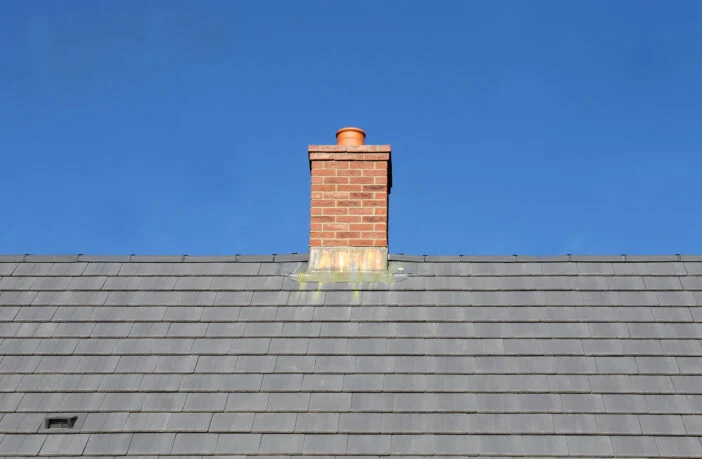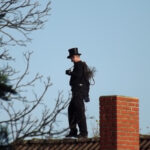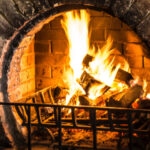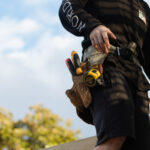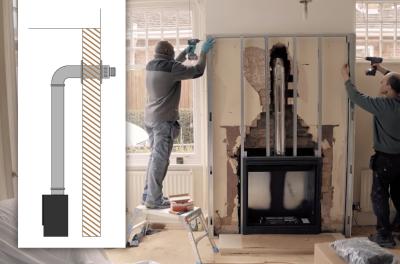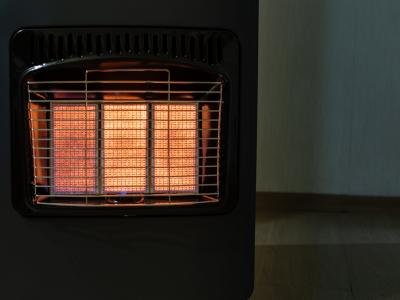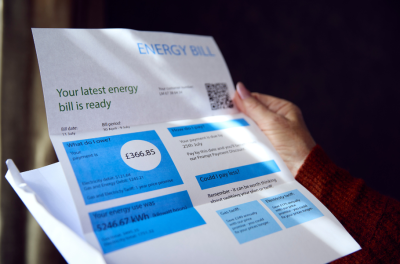We use cookies to improve your experience and our business. See our privacy/cookie policy or continue browsing to accept our use of cookies. View our cookie policy.
Does My Gas Fire Need Chimney Sweeping?
Chimney sweeping and upkeep is an essential but often overlooked part of regular home maintenance. With more of us using central heating or electric heaters and fires to warm our spaces, it's probably not surprising that many homeowners forget their chimney is even there.
But with some fires, chimney maintenance is crucial – to keep your fire running at its best and for your health and safety. Open fires and wood burners certainly need a good chimney cleaning schedule, but what about gas fires? Do you still need to have your chimney cleaned if you have a gas fire?
In short, yes. Why? Let's break it down.
Gas fires and chimneys: What you should know
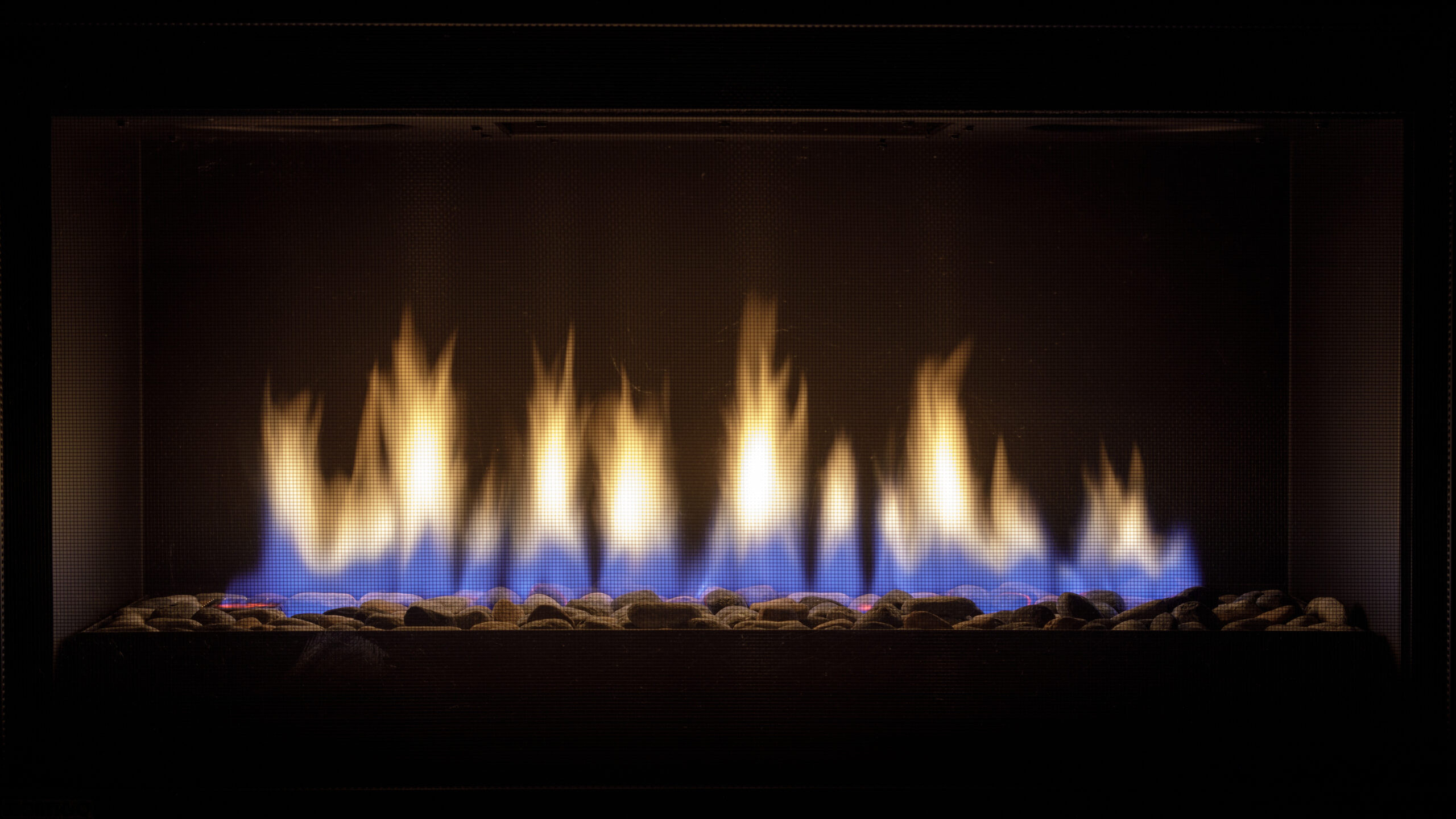
Gas fires have always been a popular home heating option thanks to their ease of use and cleaner burn. What's more, there's no need to stock up on logs or other fuel for the winter. However, it's essential to know that gas fires also expel by-products, like open fires and wood burners do.
While the by-products your gas fire produces are minimal in quantity, less visible, and less harmful to the chimney compared to other fires, they don't just vanish into thin air. Where do they go? You guessed it – they escape up the flue or chimney.
You might also like: The Best Gas Fires for Homes Without a Chimney
By-products and build-up
When gas fires burn, they produce water vapour, carbon dioxide, and other gases. Although these are not as visible, and minimal compared to the creosote, soot, and tar produced by a wood fire, they can still accumulate over time.
This might lead to a minor build-up in the chimney. While it's not as alarming as creosote build-up, it can still impact the safety and efficiency of your gas fire.
Safety concerns to be aware of
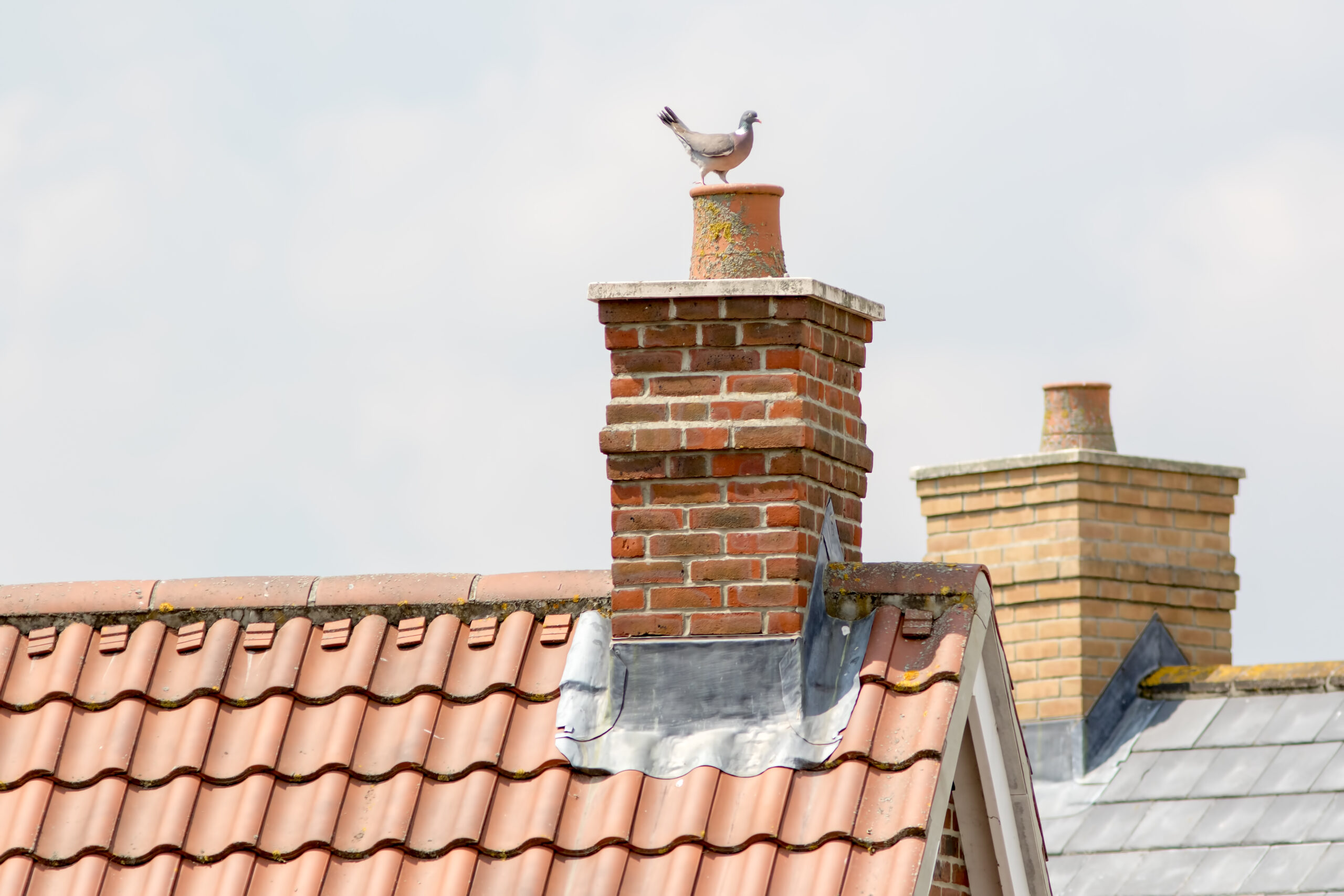
Owning a gas fire might be pretty low-maintenance, but that doesn't mean you can forget about chimney upkeep. Keeping your chimney in good condition is crucial for your safety and that of your home. Some key aspects to consider are as follows:
Ventilation matters
Your gas fire requires proper ventilation. While modern gas fires are designed to be highly efficient, any appliance that burns fuel should have a sound exhaust system. Ensuring your chimney is clean and clear helps the fireplace function at its best. Plus, it reduces the risk of harmful gases returning to your home.
Birds' nests and debris
It's not just the by-products of burning gas that can cause chimney obstructions. Birds and other critters love the shelter and warmth your chimney can offer. So, over time, don't be too surprised if you find that nests, leaves, and other debris have found their way into your chimney.
This debris can be potentially hazardous – highlighting the importance of regular chimney inspections and sweeps to spot them sooner rather than later.
Wear and tear
Like any other structure in your home, your chimney is subjected to regular wear and tear. While the by-products of a gas fire are not as visible or are harmful to the chimney as those from a wood fire are, your chimney's structural integrity can still be compromised over time by external factors like the weather.
Learn more: Fireplace Safety Tips & Advice: Gas, Electric & Wood Fires
What's involved in gas fire chimney sweeping?
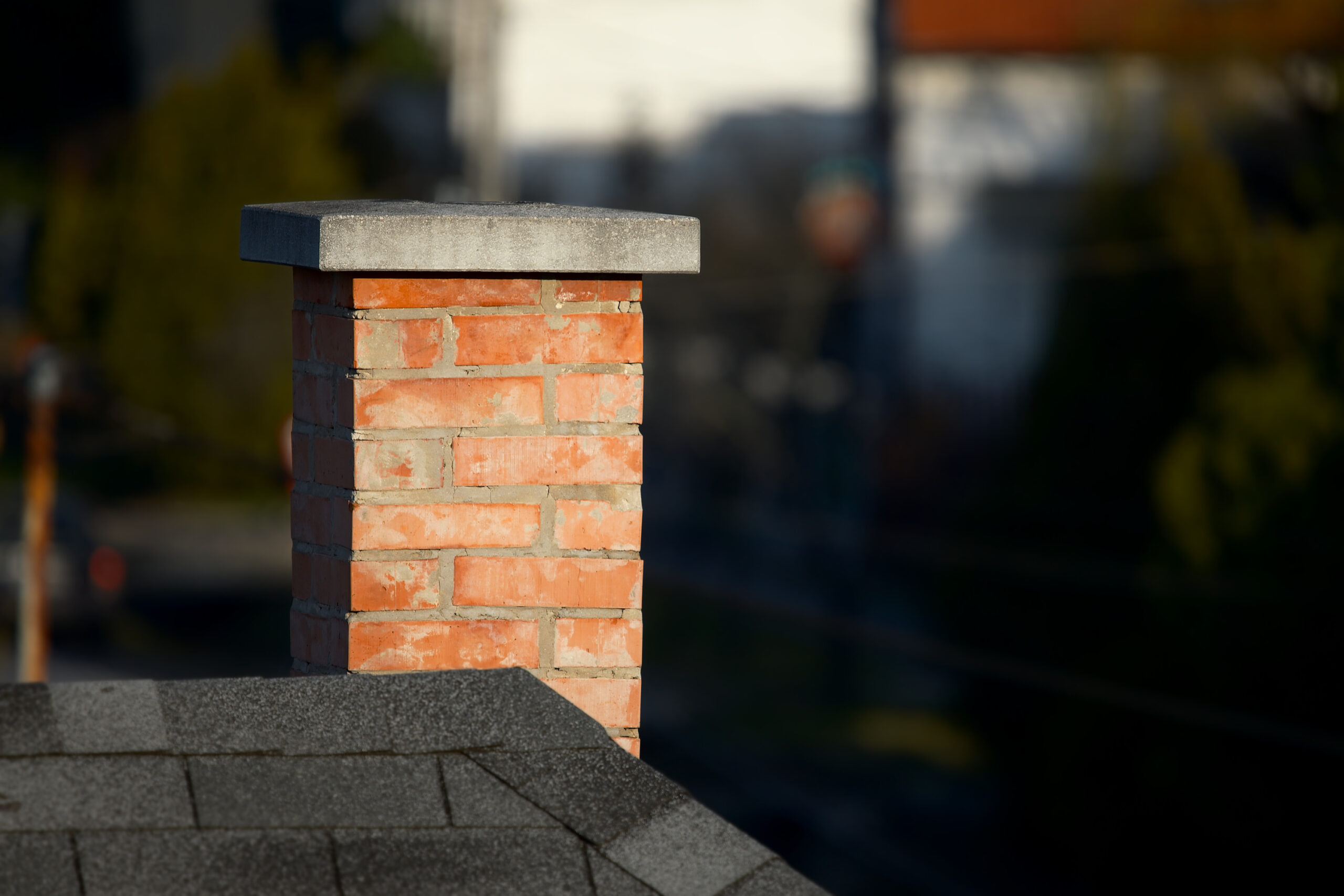
While the general principles of sweeping a chimney are the same regardless of the type of fireplace, gas fires have unique requirements and challenges. Understanding what's involved will ensure your gas fire operates as safely and efficiently as possible. Here's what goes on during a gas fire chimney sweep:
Gas fire safety check
Before cleaning, the sweep performs a safety check on the gas fire. This involves ensuring no leaks, checking that the pilot flame is blue (indicating complete combustion), and verifying all components function correctly.
Disconnecting the gas supply
The sweep will temporarily disconnect the gas supply to the fireplace for safety reasons. Why is this step important? It's crucial - it ensures no gas leakage or accidental ignition during the chimney sweeping process.
Accessing the flue
The sweep will access the flue either through the fireplace or the chimney top, depending on the build and design of your gas fire system. They will take special care not to damage any gas fire components.
Soft brush sweeping
Since gas fires produce less debris and fewer visible by-products than wood-burning counterparts, sweeping typically involves softer brushes. The main aim is to remove any minor build-up and to clear obstructions without causing any damage or wear to the flue lining.
Learn More: What Is Involved in a Chimney Inspection and Chimney Sweep?
Clearing the terminal
The chimney's terminal (or endpoint), where the flue expels gases, can sometimes become clogged or obstructed – especially by bird's nests or natural debris, like leaves. Your sweep checks this area to ensure it's clear, allowing for optimal ventilation. If they find any debris, they will remove it.
Reconnecting and testing
Once the chimney is cleaned, the sweep will reconnect the gas supply and conduct a series of tests to ensure everything's working as it should. They will ignite your gas fire to ensure it operates smoothly, check the chimney draw, and make sure there are no signs of gas leakage.
Final review
Once the chimney sweeping process is finished, the sweep will review the entire system, including the seals, gaskets, and other components of the gas fire. If any parts are worn out or damaged, they will advise you on replacements or repairs.
How often should you get your gas fire chimney swept?
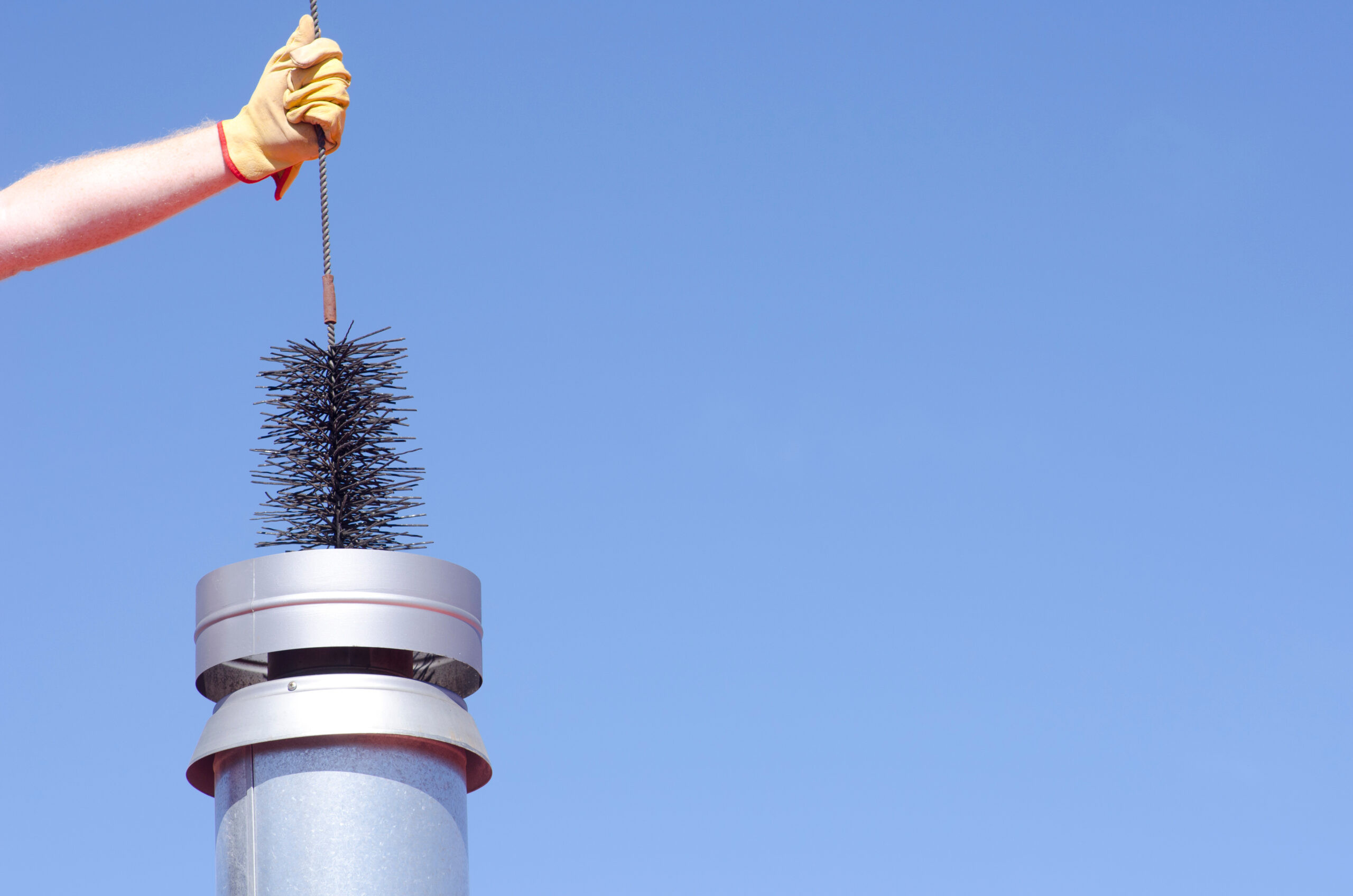
Given the comparatively cleaner nature of gas fires, you might not need to sweep your chimney as frequently as you would with a wood fire. However, periodic checks are essential.
Ideally, you should have your chimney inspected at least once per year. If significant build-up or obstructions are found during this check-up, it's best to have the chimney swept. In many cases, a simple inspection might be all you need.
Learn more: Fireplace Chimneys: A Complete Guide
Who should sweep my gas fire chimney?
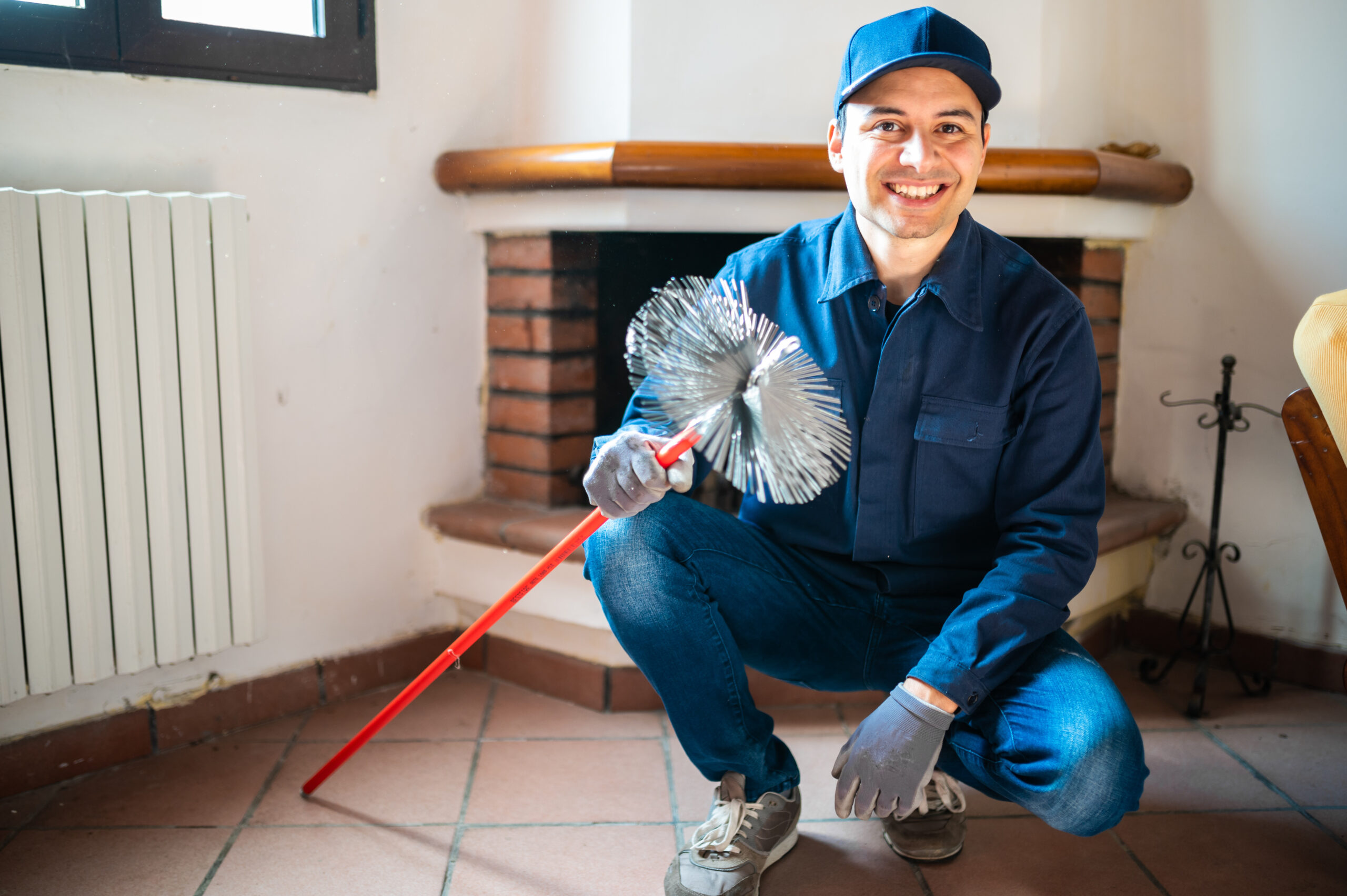
It's essential that you trust the right person to care for your gas fire's chimney. Because of the distinct characteristics of gas fires, choosing somebody adept, experienced, and well-versed in the trade is crucial. Here's what to look for:
Accredited chimney sweeps
Firstly, looking for a professional with a recognised chimney sweeping accreditation is essential. This reflects their dedication to the craft and gives you peace of mind, knowing they're up-to-date with the most recent techniques and safety guidelines.
In the UK, bodies like the National Association of Chimney Sweeps (NACS) or the Guild of Master Chimney Sweeps offer rigorous training and certifications tailored to traditional and modern chimney and flue maintenance.
Expertise in gas fire systems
While many accredited chimney sweeps are equipped to work with a range of fireplaces, choosing a professional with specific experience or expertise in gas fire systems is a good idea. Given the unique aspects of gas fires, somebody who understands them will provide a more comprehensive service.
Established reputation and testimonials
These days, learning more about a service provider's reputation is straightforward. Look for online reviews, ask for client testimonials, or get recommendations from friends and family. Consistent, positive feedback is always a good sign.
Comprehensive insurance
Confirming that the chimney sweep you're considering has liability insurance in place is vital. This will safeguard you against unforeseen damages or mishaps during the cleaning or inspection. Plus, it reflects their dedication to best practice.
Open and clear communication
Your chosen chimney sweep should not just be skilled at what they do. Still, they should also be able to clearly convey findings, suggestions, and any potential issues. Being kept in the loop about the state of your gas fire system and any necessary interventions is essential.
Broad service range
While your immediate need might be for chimney sweeping, it's worth looking for a professional who offers a broader range of services. This could include anything from inspections and repairs to complete flue upgrades. Having all your needs met under one roof can be both convenient and cost-effective in the long term.
Book a gas fire chimney sweeping
Has it been a while since your gas fire chimney was inspected or swept? We can help! Our trusted partners, Direct Heating Services, offer a wide range of gas fire installation and maintenance services. Contact them today at [email protected], call 0161 669 0697 or visit directheatingservices.com.
Looking to upgrade your gas fire? You can browse our extensive range of gas fire options here. Plus, we offer free delivery to the UK mainland, 14-day no-hassle returns, and a range of finance options.
Need more assistance? You can reach our friendly customer service team at [email protected] or 0161 376 4181. Or, visit our showrooms at Cheadle, Bromsgrove, or Stockport.
[related_products is_auto_added="1"]Joanna Humphreys
Latest posts by Joanna Humphreys (see all)
- What’s Included in a Balanced Flue Gas Fire Installation? - April 3, 2024
- How Long Do Gas Fires Last? - February 1, 2024
- How Much Does it Cost to Run a Gas Fire in 2024? - January 16, 2024

